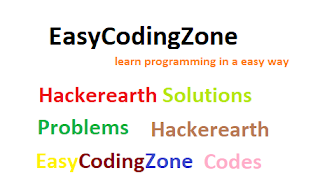What is C-scan disk scheduling:-
In SCAN algorithm, the disk arm again scans the path that has been scanned, after reversing its direction. So, it may be possible that too many requests are waiting at the other end or there may be zero or few requests pending at the scanned area. These situations are avoided in CSAN algorithm in which the disk arm instead of reversing its direction goes to the other end of the disk and starts servicing the requests from there. So, the disk arm moves in a circular fashion and this algorithm is also similar to SCAN algorithm and hence it is known as C-SCAN (Circular SCAN).
Example:- Given the following queue -- 95, 180, 34, 119, 11, 123, 62, 64 with the Read-write head initially at the track 50 and the tail track being at 199. head movement is towards low values.
Advantage:-
- Uniform waiting time
- Better response time
Disadvantage:-
- In C-SCAN even if there are no requests left to be serviced the Head will still travel to the end of the disk unlike SCAN algorithm.
Code:-
Output:-
Program of disk scheduling algorithm
Recommended Post :-
- Swap the adjacent characters of the string
- Double the vowel characters in the string
- Character with their frequency
- Program to find the closest value
- Swap adjacent characters
- Double the vowel characters
- Check valid parenthesis
- Print the characters with their frequencies
- Find closest value
- Word Count
- Program of CaesarCipher
- Program to find the perfect city
- Annual Day | Tech Mahindra coding question
- Find the number of pairs in the array whose sum is equal to a given target.
Full C course:-
Key points:-
- How to set limit in the floating value in python
- What is boolean data type
- How to print any character without using format specifier
- How to check that given number is power of 2 or not
- How to fix limit in double and floating numbers after dot (.) in c++
- How to print a double or floating point number in scientific notation and fixed notation
- How to take input a string in c
- How to reduce the execution time of program in c++.
Cracking the coding interview:-
Array and string:-
Tree and graph:-
Hackerearth Problems:-
- Very Cool numbers | Hacker earth solution
- Vowel Recognition | Hackerearth practice problem solution
- Birthday party | Hacker earth solution
- Most frequent | hacker earth problem solution
- program to find symetric difference of two sets
- cost of balloons | Hacker earth problem solution
- Chacha o chacha | hacker earth problem solution
- jadu and dna | hacker earth solution
- Bricks game | hacker earth problem
- Anti-Palindrome strings | hacker earth solution
- connected components in the graph | hacker earth data structure
- odd one out || hacker earth problem solution
- Minimum addition | Hackerearth Practice problem
- The magical mountain | Hackerearth Practice problem
- The first overtake | Hackerearth Practice problem
- Playing With Characters | Hackerrank practice problem solution
- Sum and Difference of Two Numbers | hackerrank practice problem solution
- Functions in C | hackerrank practice problem solution
- Pointers in C | hackerrank practice problem solution
- Conditional Statements in C | Hackerrank practice problem solution
- For Loop in C | hackerrank practice problem solution
- Sum of Digits of a Five Digit Number | hackerrank practice problem solution
- 1D Arrays in C | hackerrank practice problem solution
- Array Reversal | hackerrank practice problem solution
- Printing Tokens | hackerrank practice problem solution
- Digit Frequency | hackerrank practice problem solution
- Calculate the Nth term | hackerrank practice problem solution
Data structure:-
- Program to find cycle in the graph
- Implementation of singly link list
- Implementation of queue by using link list
- Algorithm of quick sort
- stack by using link list
- program to find preorder post order and inorder of the binary search tree
- Minimum weight of spanning tree
- Preorder, inorder and post order traversal of the tree
MCQs:-








0 Comments